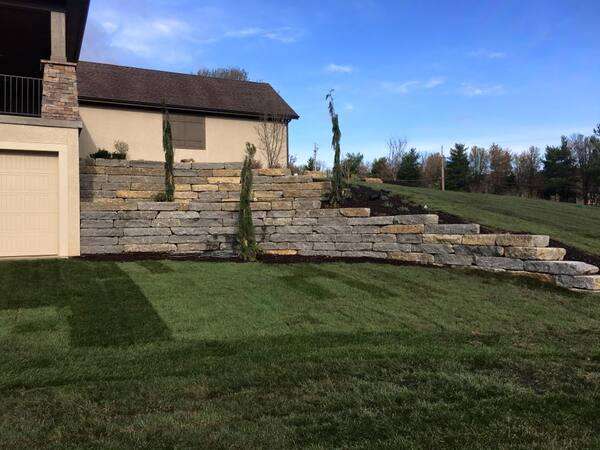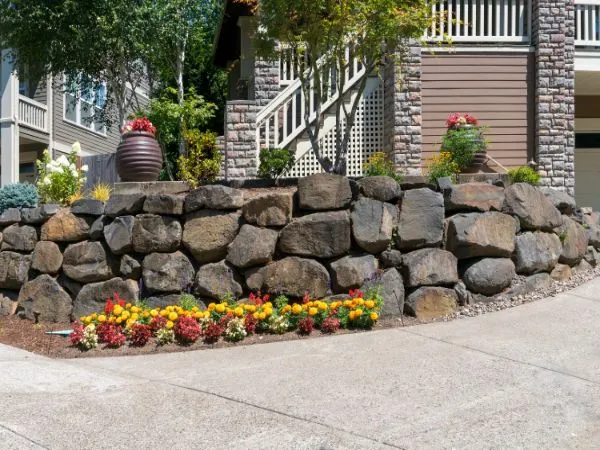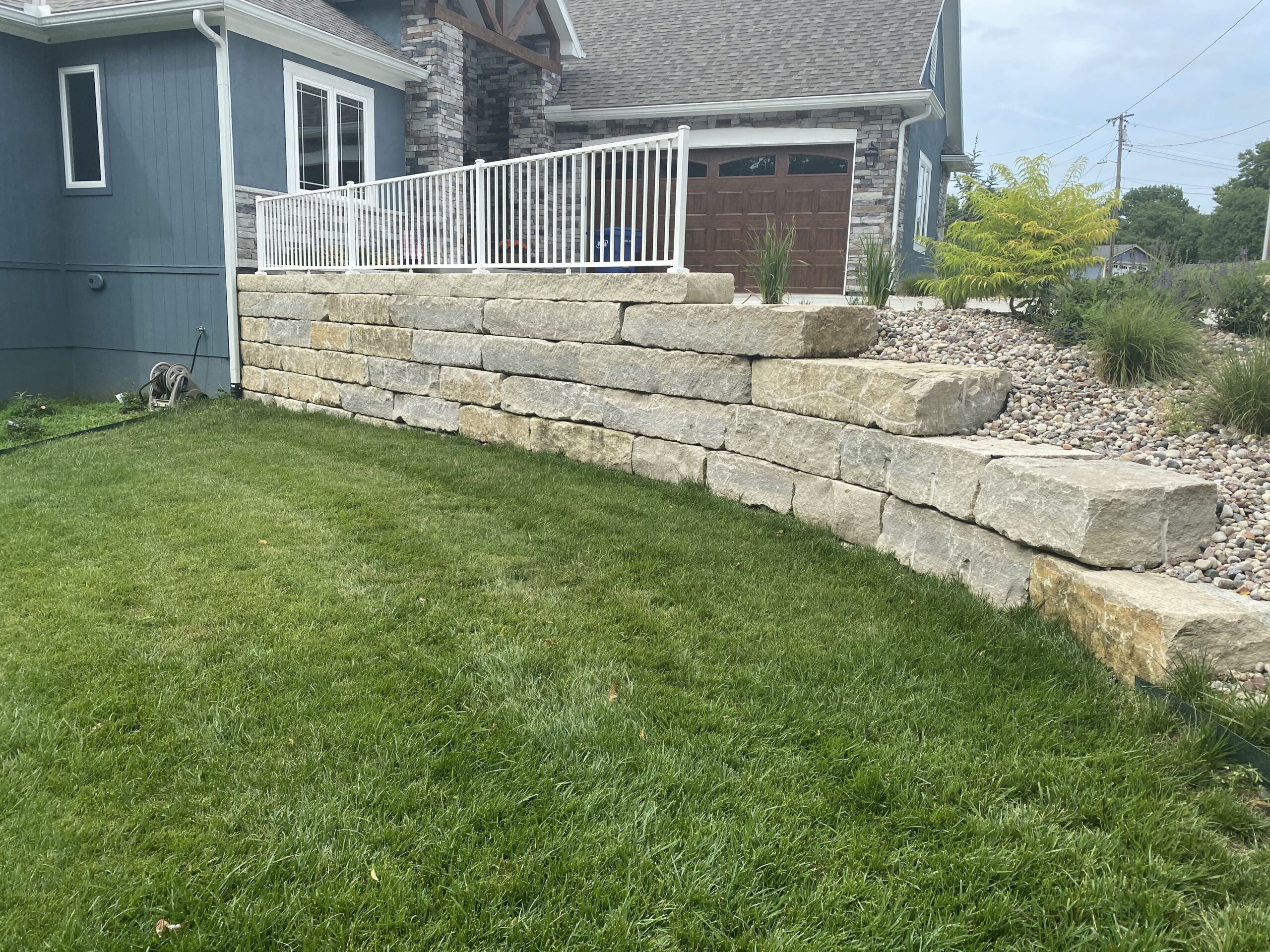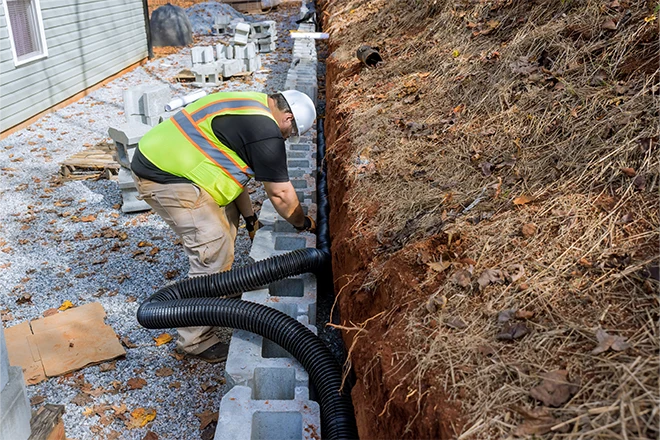
A retaining wall can be a beautiful addition to your yard, but it’s important to keep it clean and looking new. Otherwise, what was once a beautiful and helpful addition to your home can become an eyesore. This is why homeowners who have a dirty retaining wall look up ‘how to clean retaining wall blocks.’
In this article, we will teach you the best ways to clean your retaining wall and keep them looking new for years to come! You’ll also find out more about these kinds of walls for your home.
Do Some Retaining Walls Get Dirtier More Easily?
When it comes to retaining walls, there are many different types of stones that can be used, each with different pros, cons, and costs. Some stones are more porous than others, and these stones tend to get growths more easily. This is because the pores in the stone allow for moisture and other debris to get trapped, which can then lead to the growth of algae, moss, and other unsightly growths.
While it is possible to clean these types of stones, it is often more difficult than cleaning other types of retaining walls. If you have a stone that is prone to getting dirty, it is important to take extra care when cleaning it so that you do not damage the stone or the wall itself.
Cleaning Retaining Walls With Wet & Forget
What is the best Wet & Forget product for cleaning a retaining wall?
The best product for removing stains in this product line is Wet & Forget Concentrate. Its powerful formula should remove even the most stubborn stains and growths.
How To Clean A Retaining Wall With Wet & Forget
Wet & Forget is a powerful cleaner that can be used to remove moss, algae, and other stains from your retaining wall with little effort on your part. Just spray it on, let it soak in, and rinse it off-it’s that simple. For the best results, use Wet & Forget every few weeks to keep your retaining wall looking its best.
How To Clean Retaining Wall Blocks
1. Remove any debris
It’s important to remove any debris from the wall before you start cleaning it. This will help make the job much easier and ensure that you don’t miss any spots.
2. Use a hose to wet the wall
Once you’ve removed all of the debris, you can use an ordinary garden hose to wet the entire wall down. This will help loosen any dirt or grime that’s built up on the surface. You can use a garden hose for this step or a pressure washer (we’ll cover this cleaning process later in this article.)
3. Apply A Cleaner
There are a variety of cleaners you can use to clean your retaining wall blocks. A pressure washer with a detergent attachment is often the best option, but you can also use a garden hose with a spray nozzle or even a bucket of soapy water.
4. Scrub The Stone
Once you’ve applied the cleaner, use a brush to scrub the stone. A stiff bristled brush will work best for this step. You’ll need to put some elbow grease into it, but eventually, all of the dirt and grime will come off.
5. Rinse The Wall
After you’ve scrubbed the wall, use a hose to rinse it off. Make sure to get all of the cleanser off of the wall so it doesn’t leave any streaks.
6. Let It Dry
Once you’ve rinsed the retaining wall blocks, let them dry completely. This usually takes a few hours, but it can take longer if it’s a cloudy day or if the wall is in the shade.
7. Check The Wall
You’ll want to make sure your retaining wall is as clean as you want them to be. If not, you can repeat this process or use one of the others in this article.
How To Pressure Wash A Retaining Wall
- Determine if your retaining wall is made of a material that can be pressure washed
- Find a safe place to pressure wash the retaining wall- avoid spraying water towards the top of the wall, as it could cause it to collapse
- Wet the surface of the retaining wall and apply detergent
- Start pressure washing from the bottom of the wall and work your way up
- Rinse off the detergent with clean water
- Allow the retaining wall to dry completely before continuing to use it
The Most Popular Retaining Wall Materials
1. Natural stone

A natural stone retaining wall is a popular choice for many homeowners because they offer a rustic and timeless look. In addition, natural stone is a durable material that can withstand the elements.
2. Cut stone

Cut stone walls are neatly cut stacked natural stone. You can choose to cut them to many different thicknesses and lengths.
3. Rubble
Rubble retaining walls are used to prevent debris and rubble from flowing down a slope. They are typically made of concrete, brick, or stone and are often used in conjunction with a concrete or steel reinforcement.
4. Boulder

Boulder retaining walls are a popular choice for homeowners because they are affordable and durable. A well-built boulder retaining wall can last for many years, providing both function and beauty to your property.
5. Concrete blocks
Concrete block retaining walls are a popular option for homeowners looking to add some extra security and stability to their property. By using concrete blocks, you can create a strong and durable wall that will last for years to come. There are 2 other best types of stone may want to know about.
Gradex Co Is Here To Help With Your Retaining Wall Project
Learning how to clean retaining walls is a great first step to keeping your home’s exterior looking incredible. Be careful when using a pressure washer; we don’t want you to accidentally chip or otherwise damage your retaining wall.
If you’re ready to get started on your project, Gradex Co can help. We have the experience and expertise to get the job done right, so fill out our contact form today!



